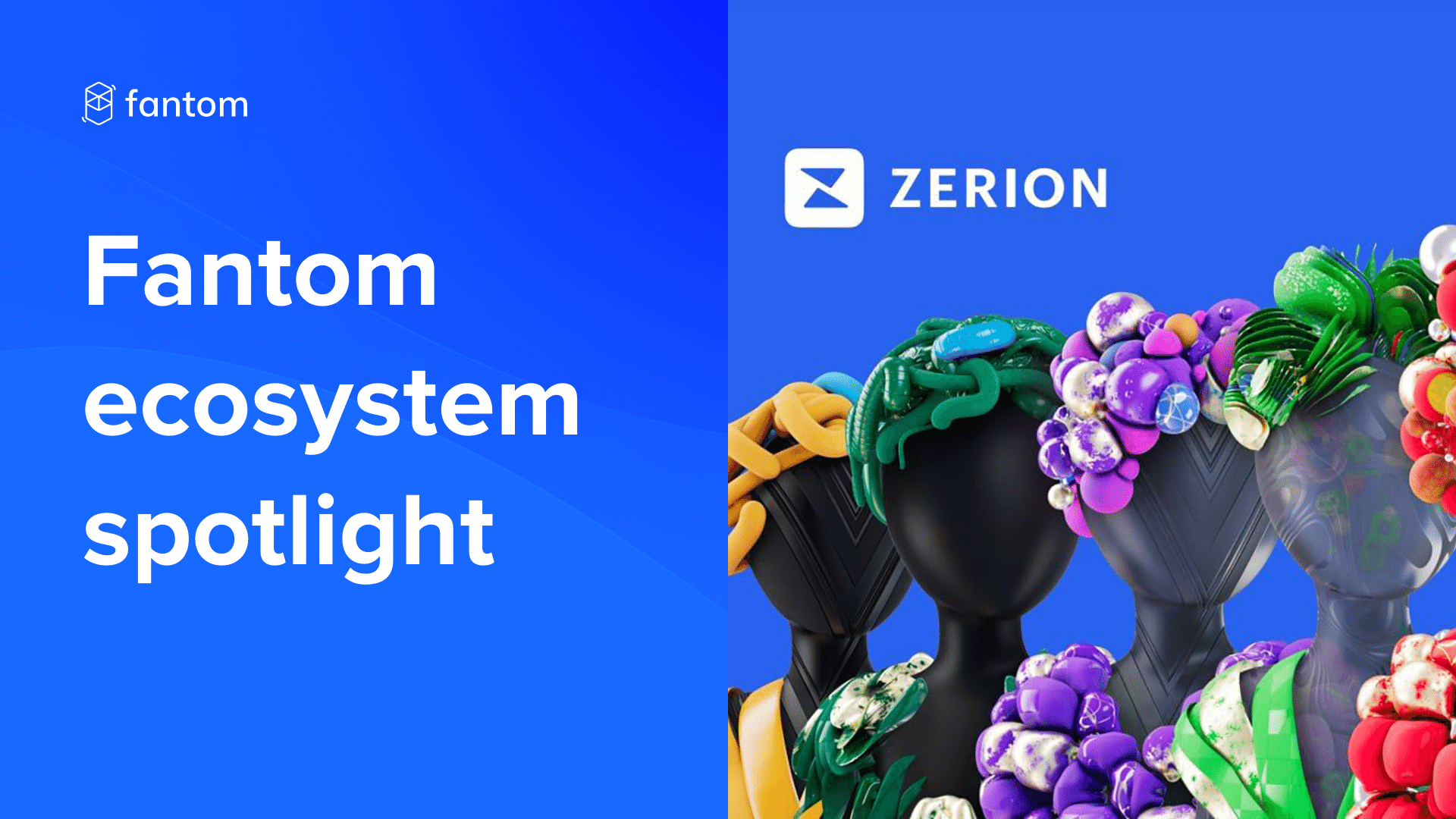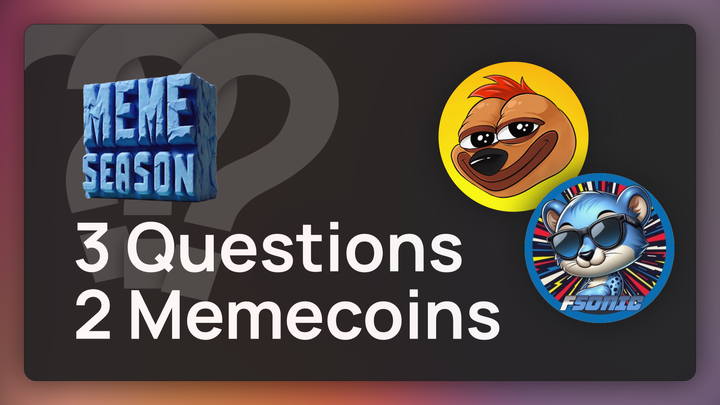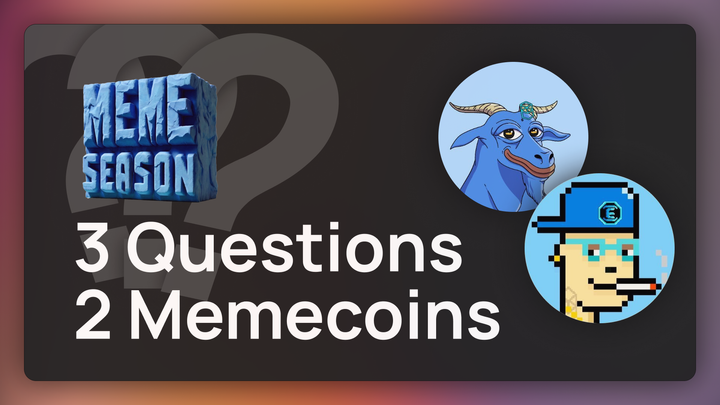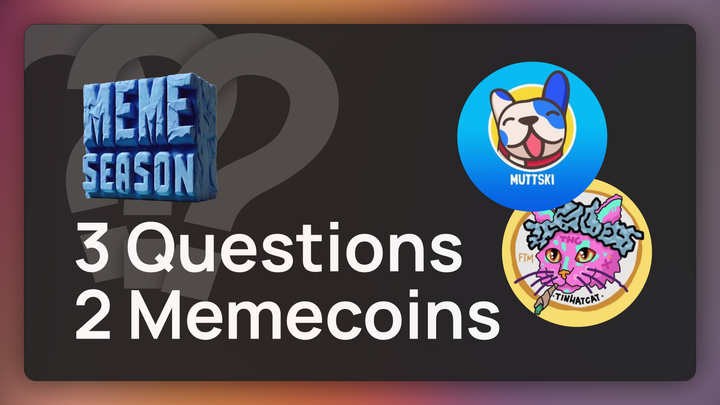Fantom Ecosystem Spotlight – Zerion

Almost every builder on Fantom will tell you that user experience and interface are two critical areas of ongoing focus among projects in the ecosystem. There is widespread recognition that UX will be crucial to onboarding the next wave of crypto users. One can already see real progress across Fantom native projects, not to mention Fantom’s own fWallet.
But what about third-party multichain wallets? Enter Zerion. Try even their web wallet before downloading the app, and it becomes clear that this team is making major strides in giving the crypto world what it needs: extensive functionality through a simple interface.
We spoke with Abishek Dharshan, Community Lead at Zerion, about their recent integration with Fantom and what's next for Zerion.
1. What is Zerion?
Zerion is a Web3 smart wallet and investing tool that enables anyone with a phone to manage their DeFi and NFT portfolios easily.
Our relentless focus on user-centered design, combined with a technology stack that aggregates across every major wallet, network, and decentralized exchange, gives users a single point of entry to Web3 for managing all of their digital assets, including NFTs.
For developers seeking to build their own wallet user interface (UI), Zerion offers an API and SDK that allows them to create a UI for users to easily track and transact tokens, trade NFTs, and use DeFi protocols.
Platforms like Rainbow, StakeDAO, and Prysm have all integrated Zerion’s API and underlying technologies to track and manage Web3 portfolios.
2. How do you introduce Zerion to a novice or someone who knows little about crypto in general?
Zerion is like a non-custodial Robinhood, in other words, an application that helps you store and manage digital assets that only you control.
You can also think of Zerion like Intuit’s Mint for Web3 assets or even a Kayak Travel booking aggregator for crypto wallets and trading.
Fundamentally, Zerion helps users buy, trade, and manage digital assets, including cryptocurrencies and NFTs.
As others have suggested, wallets are to crypto what email was initially to the internet. Wallets represent our connection and authentication method for crypto.
There are, of course, numerous wallets in the crypto space ‒ but wallet usability and user experience have been suboptimal. To create an account, many wallets require you to record seed phrases. Then you have to know how to connect to a network, not to mention the right way to deposit funds.
Unclear guidelines, complicated processes, and cumbersome UI increase the risk of mistakes or loss at every step.
This is where Zerion adds value. We’ve tuned our UI to make it intuitive, easy to use, and safe, with features that meet the needs of experienced Web3 users and crypto novices alike.
3. What makes Zerion different from other crypto wallets?
Zerion Wallet is the first mobile-friendly, multi-chain wallet that's natively compatible with every dApp.
Zerion Wallet includes:
- Smart trade routing across every major decentralized exchange
- dApp compatibility via Wallet Connect
- Fiat onramps so you can go from cash to crypto in just a few taps
- Advanced multi-seed phrase management.
Zerion Wallet features multi-chain support for 10+ networks, including Fantom, Solana, Polygon, Avalanche, Arbitrum, Binance Smart Chain, Optimism, and more.
What helps Zerion stand out in the ecosystem is the ability to connect your other non-Zerion wallets (including Ledger!) and easily manage your entire portfolio – making it the all-in-one app for exploring Web3.
Zerion’s built-in trading and bridging aggregator helps you find the best deals across every major blockchain. Added social features enable you to follow any wallet address, ENS handle, or NFT collection to stay on top of the latest trends and tokens.
The Zerion app is available on web, iOS, and Android.
4. What can you tell us about your community?
Zerion serves more than 200K monthly active users from over 150 countries. This incredibly diverse community is active primarily on Discord and Twitter. Zerion users are enthusiastic, and we’ve been thrilled at how they support and contribute to our building.
Beyond giving us invaluable feedback on the product and roadmap, community members have independently organized collaborations to promote Zerion, and the skilled developers among our supporters have even contributed to our Github.
For us, it’s gratifying to serve such an amazing user base, but more fundamentally, we learn from them, and by actively welcoming their contributions, we humanize our product.
5. How did the community receive Zerion DNA?
When they sign up, each Zerion user gets an NFT profile picture that evolves as they use the Zerion app. The NFTs are unique because their characteristics change depending on specific user actions.
They don’t stop evolving and quite literally represent the totality of a user’s behavior. It’s a perk that bridges incentives with user action.
The community loves it. We’ve noticed that it inspires our users to share their love and support for their favorite chains and discuss how those chains are represented in their profile pictures.
6. What are the core team members’ backgrounds?
We are an incredibly diverse team of Computer Scientists, Marketing Specialists, Former Co-founders of projects, and more.
We have extensive knowledge of traditional finance and its limitations, and we share a common belief that decentralization can remedy much of what is wrong with entrenched financial infrastructures.
7. How did you learn about Fantom?
Twitter and the organic awareness of existing partners who share their perspectives as we evaluated different Layer 1 networks.
8. Why did you decide to integrate Fantom?
Multiple factors brought us here. First, there was great community demand.
Further, we recognized that Fantom overcomes many of the limitations of existing Layer 2 solutions and also that Fantom has onboarded some top developers in crypto.
Last but not least, Fantom lowers the barriers of entry in terms of fees and opens a vast range of projects to Zerion’s users.
9. How was the process of integrating Fantom?
Michael (Kong) and other members of the Fantom team were quick to respond to technical queries and to offer advice on node providers and lists of must-have tokens and integrations. This made integration seamless.
It was also helpful that we could query a list of tokens via the Debank Open API and other price sources that we already use internally at Zerion.
Overall, communications from the Foundation were flawless, and we especially appreciated the co-marketing and amplification we conducted on the Web3 Wednesdays podcast and the Discord Zerion Connect calls.
10. What’s coming next from Zerion? Free alpha!
With the launch of Zerion Wallet, we’re expanding our product features to complete every Web3 use-case, including:
- Personalization and social features with push notifications and transaction history across all networks, social feeds, wallet discovery, and wallet labels.
- Enhanced dApp connectivity across all chains with Wallet Connect v2 and on-ramp aggregation that expands payment support to all providers.
- New dev infrastructure, including a Rest API for Zerion API, new documentation, and expanded chain coverage.
With dozens of protocols and chains added every week, the main integration focus is to provide users with an unparalleled user experience that complements their Web3 user journey.
With Zerion Wallet, you have one place to manage every wallet, seed phrase, and private key you own, regardless of where you first created it.
Use Zerion to place trades on any network, manage your multi-chain portfolio, and store your NFTs.
11. What advice do you have for builders looking to apply themselves to developing better UX in crypto?
- More simplicity, less information: Zerion’s UX focuses on abstracting the complexity away from cumbersome UX and tutorial-heavy interfaces you’re so used to working with
- Use visualization, social credibility, and security nudges to your advantage: examples include Zerion’s Wallet creation flow, the use of ‘Stories’ or Reels within the mobile app, etc.
- Empathy: Put yourselves in your users’ shoes & build human-centric experiences accordingly
12. Speaking generally, how do you see multichain dApps evolving?
We see most platforms moving towards a chain-agnostic user experience that works more natively for real-world use-cases like payments, remittances, savings, and more!
You don’t need to know if your USDC is on Ethereum, Fantom, Solana, or any other chain as long as it is interoperable with the dApps you love.
This type of interoperability introduces healthy competition for products to innovate on their existing use-cases. It also paves the way for more dynamic, complex use-cases, including blockchain gaming, decentralized social media, data sharing, etc.
Engage with Zerion



